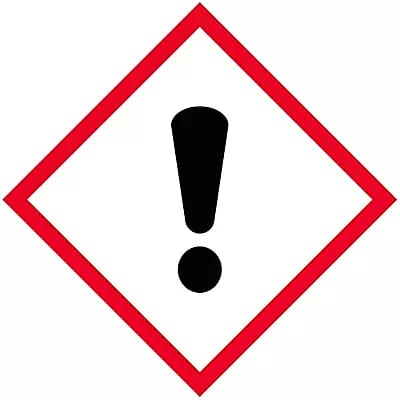In shipping, certain goods or cargo are hazardous materials (Hazmat) because of the danger they pose to the environment and the handlers of the cargo if not well handled. Many products, such as lithium batteries, dry ice aerosol, and whipped cream, seem harmless. However, during shipping, especially by air freight, they can be dangerous. Vibrations, static electricity, temperature, and pressure variations can trigger the release of toxic fumes, start a fire, or even explode if improperly handled.
A dangerous good (also known as hazardous material or hazmat) is a substance capable of posing a risk to human health, safety, property, and the environment if not well handled or controlled when transported. The first step to reducing the danger posed by hazardous goods is easy identification of such goods, which is made possible by adequate communication through proper packaging and labeling. This way, there will be appropriate handling and stowage which is necessary for cargo safety.
Usually, dangerous goods are separated into categories through a classification system based on the product's specific chemical and physical properties.
For easy identification, proper handling, shipping, and safety, hazardous goods are labeled with unique pictograms or symbols depending on the class they belong to alert everyone involved with the goods of the presence of a dangerous or harmful chemicals or substances. These symbols or pictures, which are usually labeled on the packaging of the goods, appear in different forms, figures, or shapes, usually in bright colors for proper visibility.
CLASSES AND SYMBOLS OF DANGEROUS GOODS
There are nine classes of dangerous goods, determined by the nature of the danger they present, each identified by a unique symbol. Some of the classes can be further divided into divisions, while others do not have subdivisions.
Class One (Explosives)
These are explosives, products that can explode or detonate during a chemical reaction, which could be triggered if not well handled. They are dangerous because they contain molecules designed to change their state from solid into scorching gas rapidly, e.g., fireworks and ammunition. There are six sub-divisions of explosives, which relate to the product’s behaviour when initiated.
Class Two (Gases)
Class 2 consists of compressed gases, gases in their liquefied form, refrigerated gases, mixtures of gases with other vapours, and products charged with gases or aerosols. These sorts of gases are often flammable and can be toxic or corrosive. They’re also hazardous because they can chemically react with oxygen. Examples include spray paint, household cleaners, hair products, deodorants, cosmetics, and cooking sprays.
Class Three (Flammable liquids)
These are liquids, a mixture of liquids, or liquids containing solids that require lower temperatures than others to ignite. They are volatile and combustible, making them dangerous to handle and transport. Flammable liquids are usually used as fuel for motor vehicles and aircraft in internal combustion engines. Many household products also contain flammable liquids, such as perfumery products and acetone (used in nail polish remover), paint, paint-related material, etc.
Class Four (Flammable solids)
These products are easily combustible and likely to contribute to fire outbreaks during transportation. Some are self-reactive and capable of spontaneously heating up.
Class Five (Oxidizing Agents and Organic peroxides)
These are subdivided into ‘oxidizing agents’ and ‘organic peroxides. They are highly reactive due to the high oxygen content, and they also react readily with other flammables or combustibles, e.g., adhesive activators, chemicals, etc. Fire outbreaks caused by these materials are very difficult to extinguish.
Class Six (Toxins and Infectious substances)
Toxins are capable of causing death or terminal health issues because they are made up of toxic substances that are harmful to the human body and health if they enter the body through swallowing, breathing in, or absorption through the skin. While some will kill in minutes, some might only be injurious if the dose isn’t excessive.
Infectious substances contain microorganisms that cause infectious diseases in humans or animals, otherwise known as pathogens, and can also cause death, e.g., medical waste, clinical waste, insecticides, pesticides, and acids.
Class Seven (Radioactive material)
Radioactive materials have unstable atoms that change their structure spontaneously. They also contain ‘radionuclides,’ atoms with an unstable nucleus that releases radioactive energy. When an atom changes, it emits ionizing radiation that can cause chemical or biological changes. This type of radiation is dangerous to the human body; some examples include smoke detectors, radiopharmaceuticals, and yellowcakes.
Class Eight (Corrosives)
These are highly reactive materials that produce positive chemical effects. Due to their reactivity, corrosive substances cause chemical reactions that degrade other materials when they encounter each other. If these materials happen to be living tissue, they can cause severe injury. Examples include chlorides, flux, acids potassium/sodium hydroxide, paint strippers, etc.
Class Nine (Miscellaneous dangerous goods)
This category covers substances that present possible dangers not covered in the other classes. E.g., dry ice, motor engines, seat belt pre-tensioners, marine pollutants, asbestos, airbag modules, lithium batteries, safety devices, etc.
Shippers must be knowledgeable about the product they are shipping to be aware of the precautionary measures needed for the shipment. This will also help in budget planning. Are you facing difficulties in sending your goods because they are dangerous goods? Let SARA PROCUREMENT SERVICES LIMITED take the risks off your hands.
Visit our physical office space at 3 Fatai Irawo Street, Ajao Estate, Airport Road, Lagos, Nigeria, or any of our warehouse touch point locations worldwide to learn more about us and utilise our services.
Our 247-email correspondence is hello@chinatolagos.com.
We are equally social, and you can find us @SaraProcure on your favourite channels: Twitter, Threads, Facebook, and Instagram.






Comments
Please log in to leave a comment.